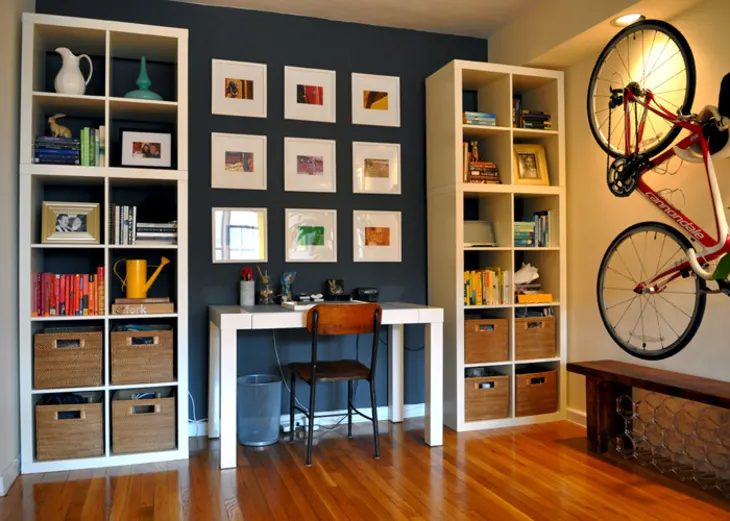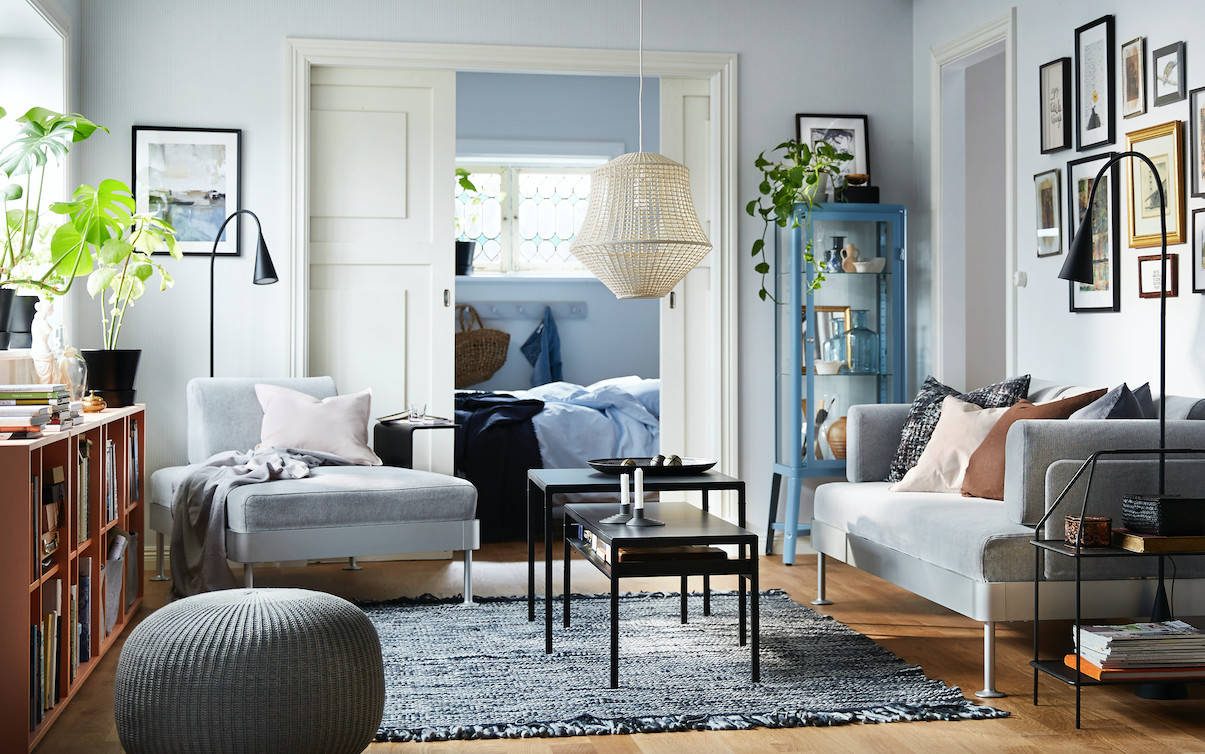Living in a small home can sometimes feel like a real challenge, especially when it comes to finding the right furniture that fits your space and meets your needs. However, with the rise of multi-functional furniture, this challenge has become much more manageable.
Multi-functional furniture pieces are designed to serve multiple purposes, making the most of your limited square footage while also providing the functionality you require. Whether you’re furnishing a studio apartment, a tiny house, or a downsized family home, these versatile pieces can be a game-changer.
From space-saving coffee tables with hidden storage to modular sofas that convert into guest beds, the options for multi-functional furniture are endless. But with so many choices, it can be overwhelming to know where to start.
That’s why we’ve put together this comprehensive guide, filled with 12 tips to help you choose the best multi-functional furniture for your small home.
Choosing Multi-Functional Furniture for Small Homes
By the end of this article, you’ll be armed with the knowledge to make informed decisions and create a functional, stylish living space that works for your unique needs.
Tip 1: Measure Your Space Carefully

Before you start shopping for multi-functional furniture, it’s essential to take precise measurements of your available space. This includes the dimensions of the room, doorways, and any other areas where you plan to place your new furniture.
By knowing the exact measurements, you can ensure that the pieces you choose will fit seamlessly into your home without overwhelming the space.
Remember to account for any obstructions or architectural features, such as radiators, windows, or low ceilings, that may impact the placement and functionality of your furniture. This attention to detail will save you from the disappointment of purchasing a piece that doesn’t quite fit or work as you had envisioned.
Tip 2: Prioritize Functionality Over Aesthetics

While it’s natural to want your furniture to be visually appealing, when it comes to small spaces, functionality should be your top priority. Look for multi-functional pieces that offer a range of uses, such as a coffee table with hidden storage compartments or a bed with built-in drawers, rather than focusing solely on the piece’s appearance.
Remember, the goal is to maximize the utility of every square foot in your home. By prioritizing functionality, you can create a cohesive and practical living space that meets your needs without sacrificing valuable real estate.
Tip 3: Explore Convertible and Transformable Pieces

One of the hallmarks of multi-functional furniture is its ability to transform and adapt to your changing needs. Look for pieces that offer convertible or transformable features, such as a sofa that can be easily converted into a guest bed or a dining table that can extend to accommodate more guests.
These versatile furniture pieces are particularly useful in small homes, where the need for flexible and adaptable solutions is paramount. By investing in transformable furniture, you can create a dynamic living environment that can evolve with your lifestyle and needs.
Related Post: 10 Steps to Create a Layered Lighting Plan for Each Room
Tip 4: Consider Modular and Customizable Designs

Modular and customizable furniture designs can be a game-changer for small homes. These pieces often come with the ability to rearrange, combine, or reconfigure different components to suit your specific needs. This allows you to create a tailored solution that maximizes the functionality and flow of your space.
Look for modular sofas, shelving units, or storage systems that can be customized to fit your room’s dimensions and your personal preferences. This level of flexibility can be especially valuable in homes with unique or challenging layouts.
Tip 5: Opt for Dual-Purpose Furniture

When it comes to multi-functional furniture, dual-purpose pieces are a smart choice for small homes. These are items that serve two distinct functions, such as a coffee table with hidden storage compartments or a bed with built-in drawers or shelves.
By choosing dual-purpose furniture, you can reduce the number of individual pieces you need, freeing up valuable floor space and creating a more streamlined, uncluttered appearance. This can be particularly beneficial in open-concept layouts or rooms with limited square footage.
Tip 6: Maximize Vertical Space

In a small home, it’s essential to make the most of your vertical space. Look for multi-functional furniture pieces that take advantage of height, such as tall shelving units, loft beds, or wall-mounted storage solutions.
These types of furniture not only provide additional storage and display space but can also create the illusion of a larger, more open room by drawing the eye upward. Just be sure to balance your vertical elements with lower, more grounded pieces to maintain a harmonious visual flow.
Tip 7: Consider Multifunctional Seating

Seating is a critical component of any living space, and in a small home, it’s important to choose pieces that offer more than just a place to sit. Look for multi-functional seating options, such as ottomans with hidden storage, benches with built-in shelves, or chairs that can double as side tables.
These types of seating solutions not only provide the necessary comfort and functionality but can also help to streamline your overall furniture layout, freeing up floor space and creating a more cohesive, organized look.
Tip 8: Embrace Flexibility with Movable Furniture

When it comes to small homes, the ability to rearrange and reconfigure your furniture is key. Look for multi-functional pieces that are lightweight, on casters, or otherwise easily movable, allowing you to quickly adapt your living space to your changing needs.
This flexibility can be especially useful for items like coffee tables, side tables, and even small-scale desks or workstations. By choosing furniture that can be easily repositioned, you can create a dynamic, versatile living environment that works for you.
Tip 9: Incorporate Multitasking Surfaces

In a small home, every surface counts, so look for multi-functional furniture that offers more than just a flat top. Consider pieces like a coffee table with a hidden compartment for storing magazines and remote controls, or a desk that doubles as a dining table when needed.
These multitasking surfaces allow you to maximize the utility of your furniture, ensuring that every inch of your living space is put to good use. Just be mindful of the overall aesthetic and make sure the pieces you choose complement your existing decor.
Related Guide: 25 Ideas for Using Textile Wall Hangings as Alternative Headboards
Tip 10: Prioritize Multipurpose Storage

Storage is a critical concern in small homes, and multi-functional furniture that offers integrated storage solutions can be a lifesaver. Look for pieces like ottomans, beds, and shelving units that incorporate hidden compartments, drawers, or cubbies to help keep your living space organized and clutter-free.
By choosing furniture with multipurpose storage, you can minimize the need for additional storage solutions, such as standalone cabinets or dressers, which can quickly consume valuable floor space. This streamlined approach can help create a more cohesive, visually appealing living environment.
Tip 11: Consider Scaled-Down Proportions

When furnishing a small home, it’s important to be mindful of the overall scale and proportions of your furniture. Look for multi-functional pieces that are designed with smaller spaces in mind, featuring scaled-down dimensions that won’t overwhelm your room.
This might include a loveseat instead of a full-size sofa, a compact dining table with nested chairs, or a petite desk that can tuck neatly into a corner. By choosing furniture with appropriately scaled proportions, you can create a comfortable, functional living space without feeling cramped or cluttered.
Tip 12: Prioritize Versatility and Adaptability

Perhaps the most important consideration when choosing multi-functional furniture for a small home is the overall versatility and adaptability of the piece. Look for furniture that can serve multiple purposes, transitioning seamlessly between different uses and accommodating your changing needs over time.
This might include a daybed that can function as both a sofa and a guest bed, a coffee table with removable trays that can be used as serving platters, or a desk that can be easily converted into a vanity or dressing table.
Tip: By investing in versatile, adaptable furniture, you can create a living space that evolves with you, providing the functionality and flexibility you need in a small home.
Conclusion
Furnishing a small home can be a challenge, but with the right multi-functional furniture, it can also be an opportunity to get creative and maximize your living space. By following these 12 tips, you can choose pieces that are not only visually appealing but also highly functional, adaptable, and tailored to your unique needs.
Remember, the key to success is to prioritize functionality over aesthetics, explore convertible and transformable designs, and look for furniture that offers multiple uses and storage solutions. With a little planning and some savvy shopping, you can create a cozy, organized, and highly functional small home that feels spacious, comfortable, and tailored to your lifestyle.
So, whether you’re furnishing a studio apartment, a tiny house, or a downsized family home, keep these tips in mind and start exploring the world of multi-functional furniture. Your small space will thank you!

